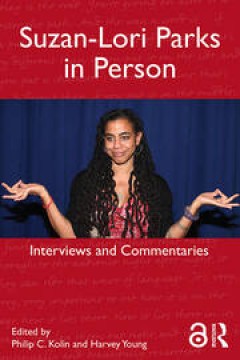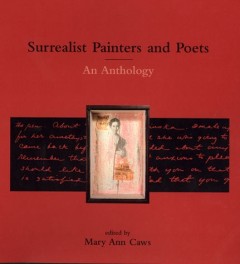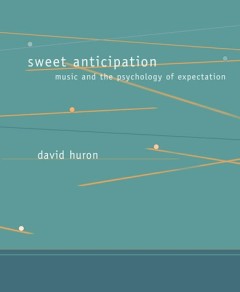Filter by

Embodied Curriculum Theory and Research in Arts Education A Dance Scholar's …
This collection of articles by Susan W. Stinson, organized thematically and chronologically by the author, reveals the evolution of the field of arts education in general and dance education in particular, through narrative and critical reflections by this unique scholar and a few co-authors. It also includes contextual insights not available elsewhere. The author's pioneering embodied research…
- Edition
- 1
- ISBN/ISSN
- 978-3-319-20786-5
- Collation
- XIV, 310
- Series Title
- -
- Call Number
- -

Hybrid Culture: Japanese Media Arts in Dialogue with the West
This title has been withdrawn from MIT Press Direct. Please follow the "Buy in Print Options" link for other ways to obtain this book. An exploration of the tensions between East and West and digital and analog in Japanese new-media art. This book grew out of Yvonne Spielmann's 2005–2006 and 2009 visits to Japan, where she explored the technological and aesthetic origins of Japanese new…
- Edition
- -
- ISBN/ISSN
- 9780262305839
- Collation
- -
- Series Title
- -
- Call Number
- -

Suzan-Lori Parks in Person
ABSTRACT This collection of interviews offers unprecedented insight into the plays and creative works of Suzan-Lori Parks, as well as being an important commentary on contemporary theater and playwriting, from jazz and opera to politics and cultural memory. Suzan-Lori Parks in Person contains 18 interviews, some previously untranscribed or specially undertaken for this book, plus commentari…
- Edition
- -
- ISBN/ISSN
- 9780203103845
- Collation
- -
- Series Title
- -
- Call Number
- -

Surrealist Painters and Poets: An Anthology
Art and writings by Surrealist painters and poets from a wide range of countries. In 1951 Robert Motherwell published a collection of writings called The Dada Painters and Poets: An Anthology. Conceived as a sequel to that volume, Surrealist Painters and Poets: An Anthology does for Surrealism what Motherwell's book did for Dadaism. The concept and contents were discussed with Robert Motherw…
- Edition
- -
- ISBN/ISSN
- 9780262270076
- Collation
- -
- Series Title
- -
- Call Number
- -

Suspensions of Perception: Attention, Spectacle, and Modern Culture
Suspensions of Perception decisively relocates the problem of aesthetic contemplation within a broader collective encounter with the unstable nature of perception—in psychology, philosophy, neurology, early cinema, and photography. Suspensions of Perception is a major historical study of human attention and its volatile role in modern Western culture. It argues that the ways in which we in…
- Edition
- -
- ISBN/ISSN
- 9780262270953
- Collation
- -
- Series Title
- -
- Call Number
- -

Sweet Anticipation: Music and the Psychology of Expectation
The psychological theory of expectation that David Huron proposes in Sweet Anticipation grew out of the author's experimental efforts to understand how music evokes emotions. These efforts evolved into a general theory of expectation that will prove informative to readers interested in cognitive science and evolutionary psychology as well as those interested in music. The book describes a set o…
- Edition
- -
- ISBN/ISSN
- 9780262275965
- Collation
- -
- Series Title
- -
- Call Number
- -

Art as demonstration :a revolutionary recasting of knowledge
"With a focus on political art and protest, this book examines demonstration-practiced as pedagogy, art form, and public protest by artists-as a powerful powerful agent of change"--OCLC-licensed vendor bibliographic record.
- Edition
- -
- ISBN/ISSN
- 9780262377546
- Collation
- 1 online resource
- Series Title
- -
- Call Number
- -

An anthology of Blackness :the state of Black design
"Shows why the design field has consistently failed to attract Black professionals, how Eurocentric hegemony impacts Black designers & how to create an antiracist, pro-Black design industry instead"--OCLC-licensed vendor bibliographic record.
- Edition
- -
- ISBN/ISSN
- 9780262377249
- Collation
- 1 online resource
- Series Title
- -
- Call Number
- -

Art, science, and the politics of knowledge
"Introduces a new field of study adapted from STS that the author refers to as art, science, and technology studies"--OCLC-licensed vendor bibliographic record.
- Edition
- -
- ISBN/ISSN
- 0262369583
- Collation
- 1 online resource.
- Series Title
- -
- Call Number
- -

Autotheory as feminist practice in art, writing, and criticism
"The merging of the autobiographical with the philosophical or theoretical traced through feminist conceptual art, performance art, literature, philosophy, and activism"--OCLC-licensed vendor bibliographic record.
- Edition
- -
- ISBN/ISSN
- 0262362961
- Collation
- 1 online resource.
- Series Title
- -
- Call Number
- -
 Computer Science, Information & General Works
Computer Science, Information & General Works  Philosophy & Psychology
Philosophy & Psychology  Religion
Religion  Social Sciences
Social Sciences  Language
Language  Pure Science
Pure Science  Applied Sciences
Applied Sciences  Art & Recreation
Art & Recreation  Literature
Literature  History & Geography
History & Geography